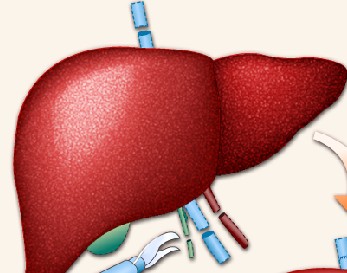Xiao Dai, a 19-year-old girl from Anhui, is a senior three student with excellent grades. She hopes to be admitted to an ideal university. However, a physical examination in August 2016 disrupted her study and life. In this physical examination, she was found to have liver cirrhosis, which was found to be related to excessive copper in her body.
According to Xiao Dai's condition, the expert team of Nanjing Second Hospital carried out pathological examination of liver tissue, imaging, blood and other examinations. According to the pathological characteristics of liver tissue, the possible causes of Xiao Dai are limited to a few diseases, among which Wilson's disease is the most likely. After a series of tests such as ceruloplasmin, urinary copper, and ATP7B gene mutation, it was finally determined that Xiaodai's cirrhosis was caused by hepatolenticular degeneration.
What is hepatolenticular degeneration? What does it have to do with copper? According to Yang Yongfeng, chief physician of the Department of Hepatology of the Second Hospital of Nanjing, hepatolenticular degeneration, also known as Wilson's disease, is an autosomal recessive disease with an incidence of 0.5 to 3 per 100000. Because the disease is rare and its incidence is hidden, it is easy to be misdiagnosed or missed. The pathogenesis of the disease is that the mutation of ATP7B gene, which regulates copper metabolism, causes the disorder of copper metabolism in the body. Copper cannot be discharged from the body, so it accumulates in the lenticular nucleus of liver tissue and nervous system, causing liver and nervous system damage clinically.
The typical manifestations of hepatolenticular degeneration include nervous system manifestations, liver damage and eye K-F ring. Typical patients can be diagnosed by routine examination, but most patients have very atypical clinical manifestations, many of them only show liver damage, which is easy to miss diagnosis. "Like this patient, there is no nervous system symptom, and there is no KF ring in the eye. Only liver injury and cirrhosis can be diagnosed through liver pathology, gene testing, blood and urine testing and other tests. ”Yang Yongfeng introduced that the pathogenesis of hepatolenticular degeneration is based on excessive copper accumulation in the body. Therefore, we should stick to a diet of "low copper and high zinc" in our life. We should not eat nuts such as walnuts, peanuts, animal viscera or fat meat, and some seafood with high copper content. We can eat more zinc tablets. Experts said that the disease was a treatable disease. Although it could not be eradicated, it could significantly delay the progress of the disease and restore normal learning and life through the treatment of copper removal such as penicillamine and zinc. Yangzi Evening News (Correspondent Zhu Nuo and reporter Yu Dandan)

